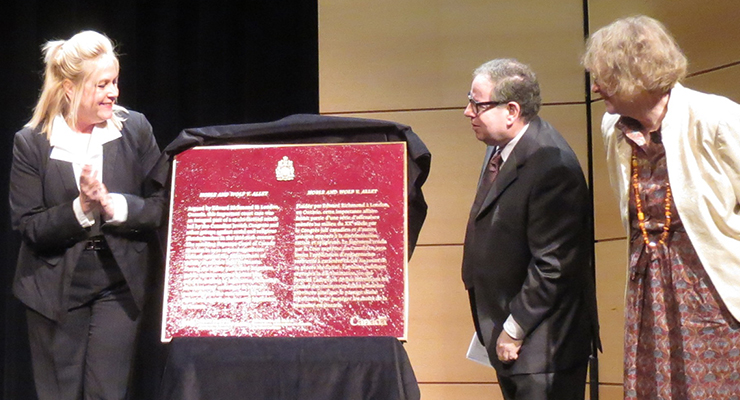Federal government honours landmark ruling against discrimination in real estate
LONDON – Long regarded as one of the Canadian real estate industry’s most memorable milestones, the story of the Supreme Court’s landmark Noble and Wolf v. Alley decision was honoured with a timely re-telling on April 14th – as the ruling was formally recognized by the Government of Canada as “an event of national historical significance.”
In a country where multiculturalism has been a fact of Canadian life since the 1800s, and currently plays a large role in our diverse real estate market, many may not know that the pursuit of home ownership wasn’t always open to everybody.
In fact, it wasn’t until 1951 that a fateful Supreme Court ruling – known thereafter as Noble and Wolf v. Alley – paved the way for a truly inclusive property market, by outlawing discriminatory language and restrictions from property deeds and covenants.
The events that led to the ruling are well-detailed in the transcript of the court’s decision (which has been made publicly available online for the benefit of real estate and legal aficionados alike):
- 1933: Annie Maud Noble purchases a piece of real estate within an Ontario summer resort. The property comes with a deed, effective until August of 1962, specifying that it “shall never be occupied or used in any manner whatsoever by any person of the Jewish, Hebrew, Semitic, Negro or coloured race or blood.” (p. 66)
- 1948: A potential buyer for the property, Mr. Wolf, submits an Offer to Purchase on April 19. In early May, legal solicitors for both Mr. Wolf and Mrs. Noble pen letters in objection of the title’s discriminatory language. (Mr. Wolf’s letter explains that “the purchaser herein might be considered as being of the Jewish race or blood.” [p. 76].) The Beach-O’-Pines Protective Association takes them to court in London, seeking to uphold the restriction and prevent the sale. The restriction is upheld by the court.
- 1949: In January, Wolf and Noble’s lawyers’ case is appealed to the Ontario Court of Appeal, where the decision is upheld yet again. (Later the same year, the Toronto Daily Star joins the general public in encouraging further appeal to the level of the Supreme Court of Canada.)
- 1950: Now backed by a legal team that includes notable lawyer Bora Laskin (who would later go on to become Chief Justice of Canada), Wolf’s lawyer Edward Richmond successfully appeals to the Supreme Court.
Interestingly, the Supreme Court justices’ biggest problem with the title’s language was its not its discriminatory tone, but its uncertainty. “It is impossible to set such limits to the lines of race or blood,” noted Justice Ivan Rand, “As would enable a court to say in all cases whether a proposed purchaser is or is not within the ban.” (p. 70)
Regardless, the outcome of the case set a hugely important precedent – one that would pave the way for Canada’s real estate industry to become as multicultural and inclusive as it is today.
The centrepiece of the April 14 ceremony, attended by federal MPs Susan Truppe and Leona Aglukkaq, was the unveiling of a plaque that will stand before the London courthouse for years to come, and bears a special commemorative inscription.
“Argued by Edward Richmond in London, Ontario, this important court case was an integral part of a multi-faceted attack […] against racial and religious discrimination,” reads the plaque (per James Reaney of the London Free Press).
“The resulting Supreme Court of Canada decision in 1950 erected significant barriers against the enforcement of racially restrictive legal covenants. During the highly publicized litigation, public opinion turned against this practice, leading to legislation outlawing discriminatory covenants in several provinces and the enactment of human rights and anti-discrimination legislation in Ontario.”
Indeed, companies like Living Realty Inc., Brokerage – which not only prides itself on serving multicultural families, but specializes in it – owe Edward Richmond and his team a great deal of thanks.
To learn more about the Historic Sites and Monuments Board of Canada, which was behind designing and erecting the plaque, we encourage you to visit their official web site at http://www.pc.gc.ca/clmhc-hsmbc/index.aspx.
Image via SusanTruppeMP.ca




